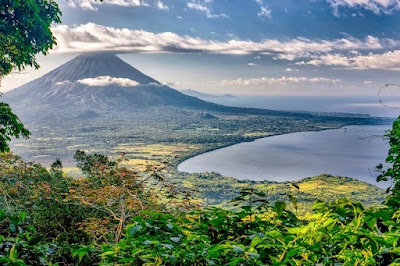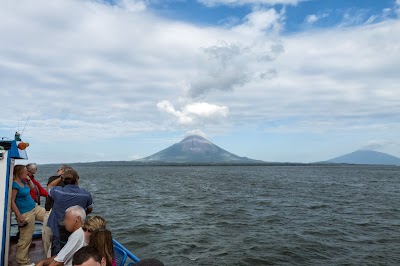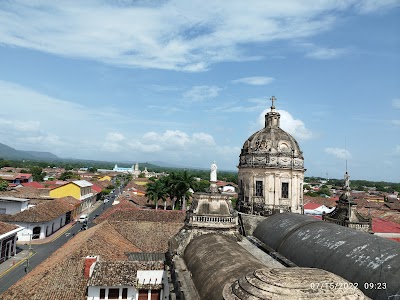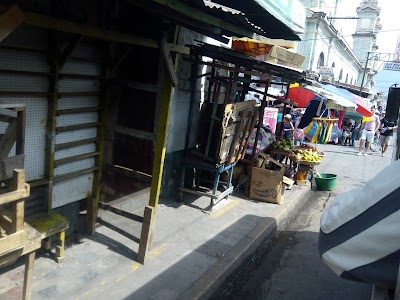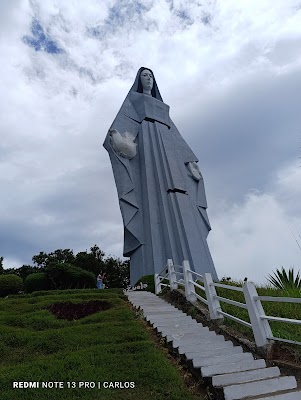Lake Nicaragua (Lago de Nicaragua)
Overview
Lake Nicaragua, known locally as "Lago Cocibolca" or the "Sweet Sea," is a breathtaking must-visit destination nestled in the lush landscapes of Granada, Nicaragua. As the largest lake in Central America, it spans an impressive 8,264 square kilometers, offering a stunning natural backdrop that captivates visitors with its vastness and beauty. Its shores are adorned with charming colonial architecture, verdant vegetation, and picturesque islands, making it an ideal spot for both relaxation and adventure.
Historically, Lake Nicaragua holds profound significance. It was first sighted by Europeans when the Spanish conquistador Gil González Dávila arrived in 1523. Since then, the lake has been integral to Nicaragua's development, serving as a critical transport route during the colonial era and continuing to play a vital role in the country's economy and culture. The lake's basin has been a hub for human settlement for thousands of years, with pre-Columbian artifacts attesting to the rich history of indigenous communities that once thrived along its shores.
One of the most unique features of Lake Nicaragua is its freshwater ecosystem, which includes a variety of aquatic species. Perhaps the most fascinating is the presence of freshwater sharks, particularly the bull sharks that migrate from the Caribbean Sea up the San Juan River into the lake. This rare phenomenon makes Lake Nicaragua one of the few places in the world where sharks are found in both saltwater and freshwater environments. Additionally, the lake supports a diverse range of fish, enhancing its ecological importance.
The charming city of Granada, located on the lake's northwestern shore, offers a glimpse into Nicaragua's storied past. Founded in 1524 by Francisco Hernández de Córdoba, Granada is one of the oldest cities in the Americas, meticulously preserving its colonial architecture. Cobblestone streets, brightly colored buildings, and beautiful churches characterize the city, with the stunning Catedral de Granada standing out as a major landmark. Tourists can stroll through vibrant markets, savor local cuisine, and explore the historic center, all while enjoying the picturesque lake as a backdrop.
A visit to Lake Nicaragua would be incomplete without exploring the famous Islets of Granada. These 365 small islands were formed by the ancient eruption of the Mombacho Volcano. Today, they are a popular destination for boat tours, offering serene views, opportunities for bird watching, and visits to private estates and rustic cabins where one can relax and soak in the natural beauty. Some of these islets host luxury accommodations and restaurants, providing a perfect blend of nature and comfort.
For the adventurous spirit, Mombacho Volcano looms nearby, inviting visitors to hike its trails and experience breathtaking panoramic views from its summit. The volcano is shrouded in a cloud forest, home to an abundance of flora and fauna, including elusive howler monkeys and a variety of exotic birds. Guided tours are available, providing insights into the unique ecosystem and the volcanic history of the region.
Lake Nicaragua is not just a scenic wonder; it is also entwined with Nicaragua's national identity and culture. Local festivals, traditions, and music often revolve around the lake, reflecting its central place in the lives of the people. Visitors have the opportunity to experience authentic Nicaraguan hospitality, partake in folk dances, and learn about the rich cultural tapestry that makes this region unique.
Aside from its natural and historical allure, Lake Nicaragua has been at the heart of ambitious international projects. In the 19th century, plans for an interoceanic canal through the lake were contemplated, competing with the eventual construction of the Panama Canal. More recently, revitalized discussions about a transoceanic canal through Nicaragua continue to capture the world's imagination.
In conclusion, Lake Nicaragua is not just a body of water; it is a vibrant, living tapestry of history, culture, and natural wonder. Whether you're exploring the cobblestone streets of Granada, experiencing the tranquility of the lake's many islets, or marveling at the unique freshwater ecosystem, Lake Nicaragua offers an unforgettable experience. Its rich historical background, combined with its scenic beauty and cultural vibrancy, makes it a destination that should not be missed by any traveler to Central America.


